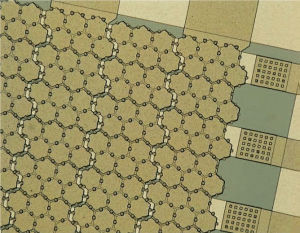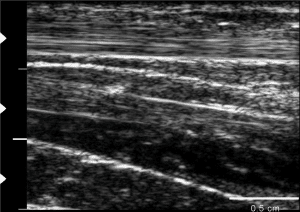Introduction
In the ever-evolving landscape of medical device technology, transducers play a pivotal role in bridging the gap between electronic signals and the physical world. In my work as an expert witness specializing in medical devices, signal processing, semiconductors, and MEMS, I’ve observed the increasing importance of transducers in both technological advancements and patent litigation. This post aims to shed light on the current state of transducer technology, its applications in medical devices, and the legal challenges surrounding this critical component.


The Technology
Transducers, derived from the Latin word “transducere” meaning “to transfer,” are devices that convert one form of energy into another. In the medical field, transducers may convert electrical signals into, for example, mechanical energy or a magnetic field. A prime example of the former is the ultrasound transducer, which has seen significant advancements since my last blog post on this topic.
Modern ultrasound transducers, particularly those using MEMS (Micro-Electro-Mechanical Systems) technology, are provoking rapid change in medical imaging. These silicon-based devices, like the one shown in the image, have evolved to provide even higher resolution images and 3D/4D capabilities. The integration of artificial intelligence and machine learning algorithms with these advanced transducers has further enhanced diagnostic accuracy and efficiency.
Recent Litigation
The critical nature of transducers has led to many patent disputes in recent years. Some notable cases include:
- Fujifilm Sonosite, Inc. v. Butterfly Network, Inc., 1:22-cv-00309 (U.S. District Court for the District of Delaware, 2022). This case involved alleged infringement of ultrasound transducer array patents, highlighting the ongoing innovation and competition in portable ultrasound technology.
- Immersion Corporation v. Apple Inc. et al., 1:16-cv-00077 (U.S. District Court for the District of Delaware, 2016). Immersion, a developer of haptic feedback technology, sued Apple for allegedly infringing patents related to transducers used in the “Taptic Engine” of iPhones and Apple Watches. The lawsuit centered on the use of specific transducer designs to create realistic tactile sensations, showing how even seemingly minor technical details can become major points of contention.
- Sonos, Inc. v. Google LLC (U.S. District Court for the Northern District of California, 2021). This case involves patents related to wireless audio streaming technology. While not only focused on transducers, the case highlighted the importance of signal processing techniques used in conjunction with transducers. Sonos alleged that Google infringed patents related to synchronizing multiple speakers, showing how transducer technology often intersects with other technical fields in patent disputes.
The Role of the Expert Witness
Navigating the complexities of transducer technology in patent litigation demands specialized knowledge. An effective expert witness in this field must have a deep understanding of not only the underlying physics and engineering principles but also the nuances of relevant patent claims and industry practices.
A competent expert witness in transducer technology should be able to:
- Clearly explain complex technical concepts to a non-technical audience, such as judges and juries.
- Analyze patent claims and determine their scope and applicability to the technology in question.
- Evaluate technical documents, including patent applications, engineering drawings, and source code, to identify potential infringement or invalidity issues.
- Potentially, conduct independent testing and analysis to support their opinions.
- Provide clear and concise expert reports that meet legal standards of admissibility.
- Testify confidently and effectively in depositions and court proceedings.
Finding an expert witness who can effectively bridge the gap between complex technical details and legal arguments is important for success in transducer patent litigation. The right expert can provide invaluable insights, educate the court, and ultimately help secure a favorable outcome.
Leave a Reply